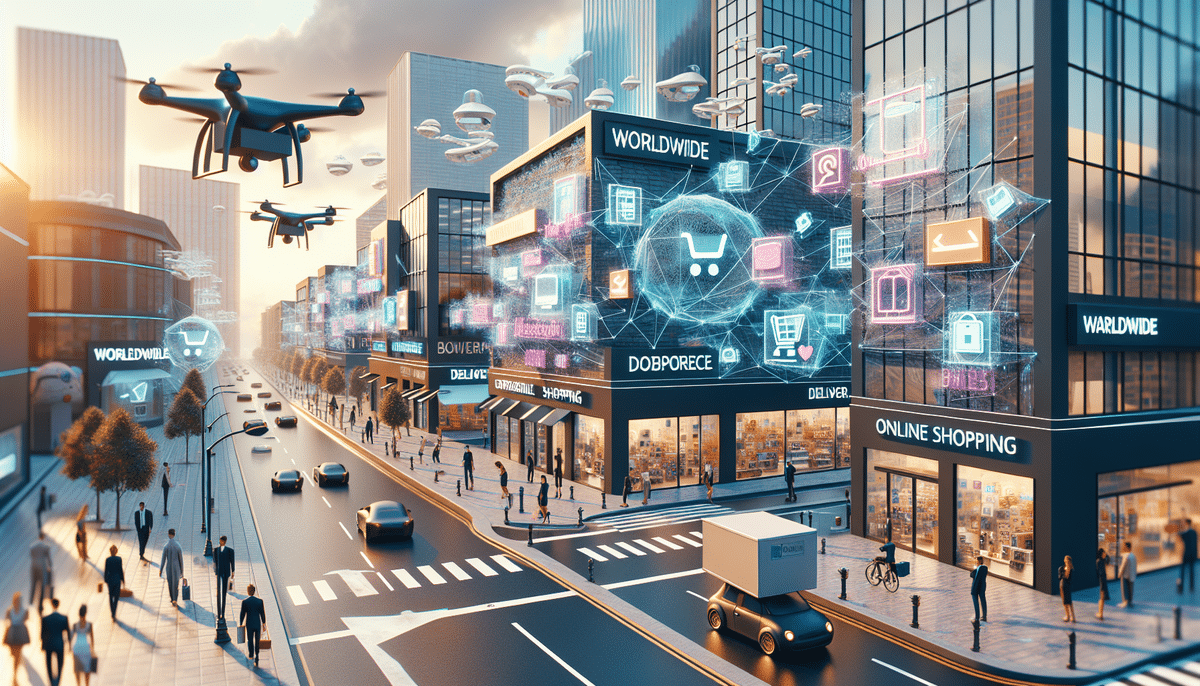Introduction to Ecommerce Trends
Ecommerce has been on a consistent rise, becoming a pivotal component of the global retail landscape. The growth trajectory that surged in recent years is expected to continue, driven by advancements in technology and evolving consumer behaviors. This article provides an in-depth analysis of the current state of the ecommerce market, the impact of global events, future predictions, technological influences, emerging trends, major challenges, strategic insights for businesses, regional differences, cross-border opportunities, sustainability practices, the influence of social media, consumer behavior insights, the importance of data analytics, and evolving legal and regulatory landscapes.
Market Overview and Growth
Current State of the Ecommerce Market
As of 2023, global ecommerce sales have surpassed $6.5 trillion, reflecting a compound annual growth rate (CAGR) of approximately 16%. According to Statista, this growth is fueled by increasing smartphone adoption, the proliferation of online marketplaces, and greater internet penetration across the globe.
Key Market Players
Online marketplaces such as Amazon and Alibaba continue to dominate the market by offering extensive product ranges and leveraging artificial intelligence (AI) to enhance customer experiences through personalized recommendations and improved search functionalities.
Regional Market Insights
Ecommerce growth varies by region. While North America and Europe remain mature markets with high consumer penetration, Asia-Pacific and Africa are witnessing rapid expansion driven by increasing internet access and mobile device usage.
Impact of Global Events on Ecommerce
The COVID-19 Pandemic
The COVID-19 pandemic drastically accelerated the shift towards online shopping. According to McKinsey & Company, ecommerce sales surged as lockdowns and social distancing measures limited access to physical stores, compelling consumers to embrace online alternatives.
Post-Pandemic Trends
In the post-pandemic era, businesses have integrated online and offline operations to create hybrid models, enhancing resilience against future disruptions. The emphasis on digital transformation and robust logistics capabilities continues to shape the ecommerce landscape.
Technological Advancements Shaping Ecommerce
Artificial Intelligence and Machine Learning
AI and ML technologies are revolutionizing ecommerce by enabling personalized shopping experiences, improving customer service through chatbots, and optimizing supply chain and logistics operations. It is anticipated that over 50% of ecommerce businesses will leverage AI and ML by the end of 2023.
Mobile Commerce (M-Commerce)
Mobile devices account for over 70% of total ecommerce sales. The ubiquity of smartphones and tablets has made m-commerce a significant driver of online sales, prompting businesses to prioritize mobile optimization for their websites and applications.
Virtual and Augmented Reality
Virtual Reality (VR) and Augmented Reality (AR) technologies are enhancing the online shopping experience by allowing customers to visualize products in realistic settings, thereby aiding informed purchasing decisions and reducing return rates.
Emerging Trends and Innovations
Voice Commerce
Voice-activated shopping through devices like Amazon Echo and Google Home is gaining traction, offering consumers a hands-free and convenient shopping experience.
Social Commerce
Platforms such as Facebook, Instagram, and TikTok are integrating shopping features, enabling businesses to sell directly through social media channels via shoppable posts and live streaming events.
Sustainability and Ethical Practices
Consumers increasingly prefer eco-friendly products and ethical business practices. Ecommerce companies are responding by adopting sustainable packaging, reducing carbon footprints, and ensuring ethical sourcing to align with consumer values.
Challenges and Strategies for Success
Major Challenges
- Intense Competition: The surge in online businesses increases market saturation, making it harder for new and small businesses to gain visibility.
- Logistics and Supply Chain: Efficient logistics remain a challenge, especially with rising costs and the need for rapid delivery systems.
- Cybersecurity Threats: Protecting customer data and ensuring secure transactions are critical to maintaining consumer trust.
- Sustainability: Balancing growth with sustainable practices poses both logistical and financial challenges.
Strategic Insights
- Invest in Advanced Technologies: Leveraging AI, ML, and data analytics to enhance operations and customer experiences.
- Enhance Customer Experience: Providing personalized, seamless, and convenient shopping experiences to build customer loyalty.
- Adopt a Multi-Channel Approach: Engaging customers across various platforms, including websites, mobile apps, and social media.
- Focus on Sustainability: Implementing eco-friendly practices to meet consumer demand and differentiate from competitors.
Future Outlook for Ecommerce
Growth Projections
The global ecommerce market is projected to continue its upward trajectory, with estimates reaching $8 trillion by 2025. This growth is supported by increasing internet penetration, advancements in logistics, and evolving consumer preferences.
Cross-Border Ecommerce
Cross-border ecommerce presents significant growth opportunities, allowing businesses to reach international markets. However, navigating regulatory requirements, cultural differences, and logistical complexities remains a challenge.
Legal and Regulatory Landscape
Compliance with data protection regulations such as the EU General Data Protection Regulation (GDPR) and the California Consumer Privacy Act (CCPA) is essential. Staying informed about evolving legal requirements is crucial for maintaining operational integrity and consumer trust.
Conclusion and Recommendations
- Adopt advanced technologies to streamline operations and enhance customer experiences.
- Focus on personalized and seamless shopping experiences to attract and retain customers.
- Implement sustainable and ethical practices to align with consumer values and improve brand reputation.
- Utilize data analytics to drive informed decision-making and optimize business performance.
- Ensure compliance with legal and regulatory standards to build and maintain consumer trust.
Ecommerce continues to evolve rapidly, presenting both opportunities and challenges. By embracing technological advancements, understanding consumer behavior, and adopting strategic practices, businesses can navigate the dynamic ecommerce landscape and achieve sustained growth.








